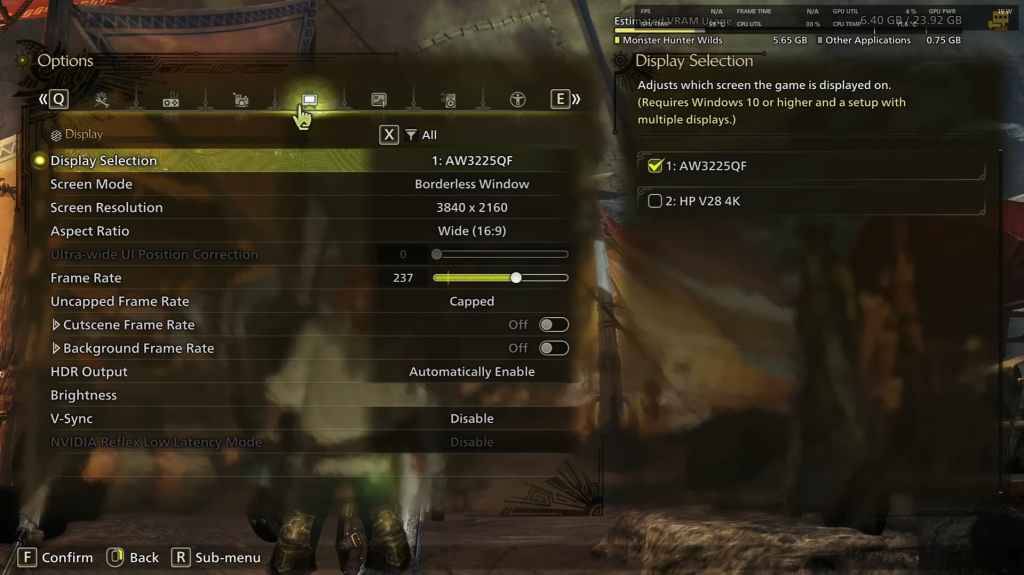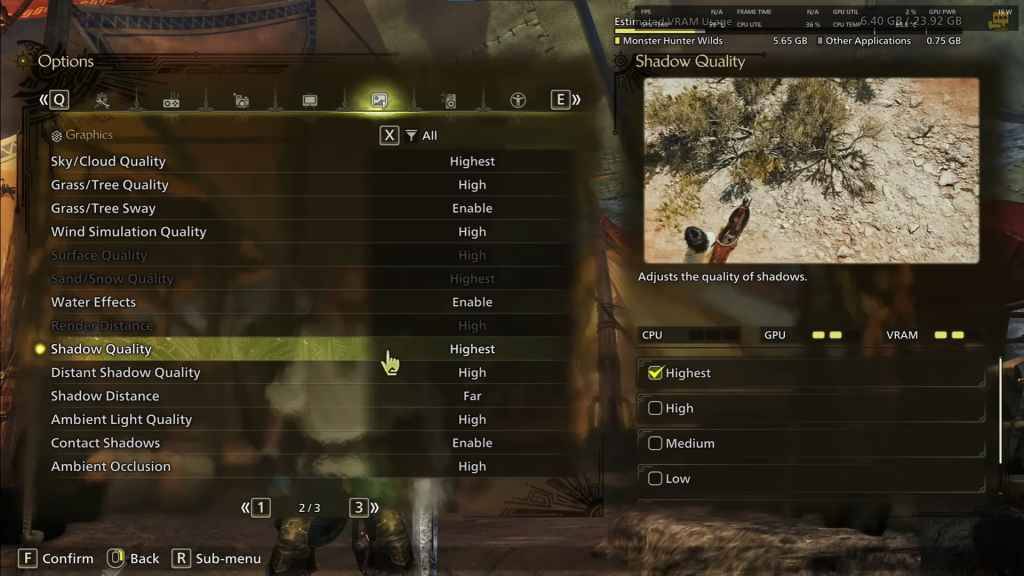*Monster Hunter Wilds* is a visually stunning game, and optimizing your graphics settings can help you achieve the best balance between performance and visual quality. Whether you're running a high-end RTX 4090 or a more modest RX 5700XT, these settings will help you enjoy the game's breathtaking world without sacrificing too much performance.
Monster Hunter Wilds System Requirements
To ensure you can run *Monster Hunter Wilds* at higher resolutions or max settings, you'll need a high-end GPU with ample VRAM and a powerful CPU. Below are the system requirements for both minimum and recommended setups:
| **Minimum Requirements** | **Recommended Requirements** |
| **OS:** Windows 10 or newer **CPU:** Intel Core i5-10600 / AMD Ryzen 5 3600 **Memory:** 16GB RAM **GPU:** NVIDIA GTX 1660 Super / AMD Radeon RX 5600 XT (6GB VRAM) **DirectX:** Version 12 **Storage:** 140GB SSD required **Performance Expectation:** 30 FPS @ 1080p (upscaled from 720p) | **OS:** Windows 10 or newer **CPU:** Intel Core i5-11600K / AMD Ryzen 5 3600X **Memory:** 16GB RAM **GPU:** NVIDIA RTX 2070 Super / AMD RX 6700XT (8-12GB VRAM) **DirectX:** Version 12 **Storage:** 140GB SSD required **Performance Expectation:** 60 FPS @ 1080p (Frame Generation enabled) |
Monster Hunter Wilds Best Graphics Settings
Optimizing your graphics settings in *Monster Hunter Wilds* is crucial for the best gaming experience. While the difference between Ultra and High settings may be subtle visually, the performance impact can be significant.
Display Settings

- **Screen Mode:** Choose based on your preference. Bordered Fullscreen is recommended if you frequently tab out.
- **Resolution:** Set to your monitor's native resolution.
- **Frame Rate:** Match your monitor's refresh rate (e.g., 144, 240).
- **V-Sync:** Turn off to reduce input lag.
Graphics Settings

| Setting | Recommended | Description |
| **Sky/Cloud Quality** | Highest | Enhances atmospheric detail. |
| **Grass/Tree Quality** | High | Affects vegetation detail. |
| **Grass/Tree Sway** | Enabled | Adds realism but has a minor performance impact. |
| **Wind Simulation Quality** | High | Improves environmental effects. |
| **Surface Quality** | High | Details on the ground and objects. |
| **Sand/Snow Quality** | Highest | For detailed terrain textures. |
| **Water Effects** | Enabled | Adds reflections and realism. |
| **Render Distance** | High | Determines how far objects are rendered. |
| **Shadow Quality** | Highest | Improves lighting but is demanding. |
| **Distant Shadow Quality** | High | Enhances shadow detail at a distance. |
| **Shadow Distance** | Far | Controls how far shadows extend. |
| **Ambient Light Quality** | High | Enhances shadow detail at a distance. |
| **Contact Shadows** | Enabled | Enhances small object shadowing. |
| **Ambient Occlusion** | High | Improves depth in shadows. |
These settings prioritize visual fidelity over raw FPS, as *Monster Hunter Wilds* is not a competitive game. However, if you're experiencing performance issues, consider reducing settings like Shadows, Ambient Occlusion, and Render Distance. For VRAM management, you might also lower Water Effects and Sand/Snow Quality.
Best Settings for Different Builds
Not everyone has a high-end build capable of running games at 4K. Here are tailored settings for different hardware tiers:
Mid-Range Build (GTX 1660 Super / RX 5600 XT)
- **Resolution:** 1080p
- **Upscaling:** AMD FSR 3.1 Balanced
- **Frame Gen:** Off
- **Textures:** Low
- **Render Distance:** Medium
- **Shadow Quality:** Medium
- **Distant Shadow Quality:** Low
- **Grass/Tree Quality:** Medium
- **Wind Simulation:** Low
- **Ambient Occlusion:** Medium
- **Motion Blur:** Off
- **V-Sync:** Off
- **Expected Performance:** ~40-50 FPS at 1080p
Recommended Build (RTX 2070 Super / RX 6700XT)
- **Resolution:** 1080p
- **Upscaling:** FSR 3.1 Balanced
- **Frame Gen:** Enabled
- **Textures:** Medium
- **Render Distance:** Medium
- **Shadow Quality:** High
- **Distant Shadow Quality:** Low
- **Grass/Tree Quality:** High
- **Wind Simulation:** High
- **Ambient Occlusion:** Medium
- **Motion Blur:** Off
- **V-Sync:** Off
- **Expected Performance:** ~60 FPS at 1080p
High-End Build (RTX 4080 / RX 7900 XTX)
- **Resolution:** 4K
- **Upscaling:** DLSS 3.7 Performance (NVIDIA) / FSR 3.1 (AMD)
- **Frame Gen:** Enabled
- **Textures:** High
- **Render Distance:** Highest
- **Shadow Quality:** High
- **Distant Shadow Quality:** High
- **Grass/Tree Quality:** High
- **Wind Simulation:** High
- **Ambient Occlusion:** High
- **Motion Blur:** Off
- **V-Sync:** Off
- **Expected Performance:** ~90-120 FPS at 4K (upscaled)
*Monster Hunter Wilds* offers a plethora of graphical options, but not all impact gameplay equally. If you're struggling with performance, focus on reducing shadows, ambient occlusion, and render distance. Budget users should leverage FSR 3 upscaling to boost FPS, while high-end builds can handle 4K settings with frame generation.
For the best balance, use a mix of medium to high settings, enable upscaling, and adjust shadows and distance settings according to your hardware capabilities.
And those are the best graphics settings for *Monster Hunter Wilds*.
*Monster Hunter Wilds is available now on PlayStation, Xbox, and PC.*















